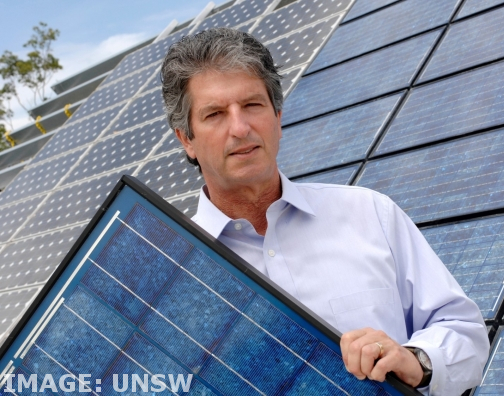Global prize for local science
 A UNSW researcher has become the first Australian to win the prestigious Global Energy Prize, worth more than $820,000.
A UNSW researcher has become the first Australian to win the prestigious Global Energy Prize, worth more than $820,000.
The annual Global Energy Prize - which is shared between two recipients this year - honours outstanding achievements in research and technology that are addressing the world’s pressing energy challenges. It is presented each year by the President of Russia.
Professor Green, who is Director of the Australian Centre for Advanced Photovoltaics at UNSW, was honoured for having “revolutionised the efficiency and costs of solar photovoltaics, making this now the lowest cost option for bulk electricity supply”.
He shares the prize and RUB 39 million (AU$820,000) prize money this year with Russian scientist Sergey Alekseenko, an expert in thermal power engineering. They were selected from 44 contenders from 14 countries by a committee of leading scientists.
The Global Energy Prize has a reputation score of 0.48 on the IREG List of International Academic Awards, with a Nobel Prize scoring 1.0. The ten finalists this year included businessman and engineer Elon Musk.
Professor Green is a world-leading specialist in both monocrystalline and polycrystalline silicon solar cells, and runs the largest and best-known university-based photovoltaic research group in the world.
The enormous reductions in costs in photovoltaic solar systems in recent years is directly related to his scientific efforts, largely through the work of his students in establishing manufacturing centres in Asia.
His record-breaking achievements stretch across decades. In 1989, his team supplied the solar cells for the first photovoltaic system with an energy conversion efficiency of 20 per cent. In 2014, he headed the development team that first demonstrated the conversion of sunlight into electricity with an energy conversion efficiency of 40 per cent.
Professor Green also invented the PERC solar cell, which accounted for more than 24 per cent of the world’s silicon cell manufacturing capacity at the end of 2017. Sales of systems containing this solar cell exceeded US$10 billion in 2017.
The use of PERC solar cells (solar cells with passivated emitter and rear surface) is predicted to save at least $750 million in power production costs in Australia alone over the next decade.
Professor Green is also co-inventor of the laser-doped, selective emitter solar cell, used in solar panels worth more than $1 billion which were sold by the company Suntech between 2009 and 2011.
He is also a pioneer in the area of perovskite photocells, which he believes could be used as a supplement to silicon solar panels, with a combination of the two materials potentially able to further reduce the cost of electricity.
“The efficiency of solar modules is an area whose progress has been faster than many experts expected, and this is good news,” Professor Green said.
“We need to maintain the pace of research in Australia, not only to keep our international lead, but also to benefit society by providing a cheap, low carbon source of electricity.
“Given the quality of the candidates on the shortlist, receiving this prize is a great honour, and will spur on our efforts. I look forward to the presentation in Russia in October.”








 Print
Print